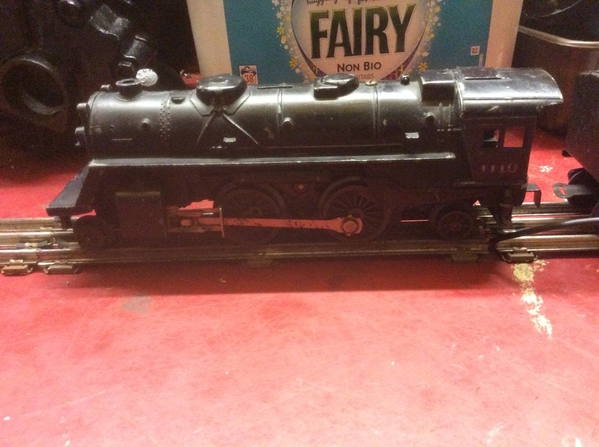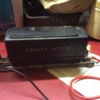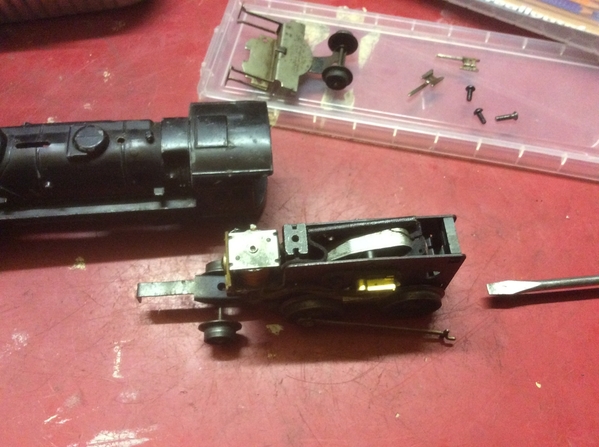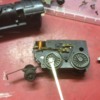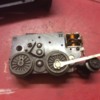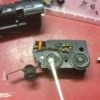@bmoran4 sorry but you're mistaken. The 2034 which came out in 1952 used the SAME shell as the 1110, with the same motor and e-unit the original poster has. The 2034-100 motor was installed by many service centers as an "upgrade" to the plastic scout motor with the finicky rotating brush holders; that's probably what happened here. On the 2034, the lever is neither visible nor accessible when the loco is on the track. You have to reach under to throw it, that's just how it is. Some later 2-4-2's with a two-position E-unit had a horizontal slot on the top just in front of the cab. Which is not applicable to his cab OR motor.
@Rockershovel you don't need to modify your shell and shouldn't attempt to do so. When the lever is contacting the rivet, the E-unit (electro-mechanical transmission) is in the circuit. When power is applied the coil is energized. It pulls a solenoid upward, and a pawl catches on a drum, causing it to rotate. The drum is covered with a copper foil which acts as a double-pole, double throw switch, feeding current to one side of the circuit or the other, which is the only way to reverse a series-wound AC motor.
Sometimes the copper foil on the drum and "fingers" becomes oxidized. To cure this, spray the drum and fingers with electrical contact cleaner. Also, spray the brush wells (brass tubes on one side of the motor.) You can do this without taking the motor/chassis apart. Allow the fluid to dry (it's flammable!), and then run the train back and forth vigorously under power. This should burnish off the oxidation and restore normal operation. Otherwise, your E-unit may need to be professionally rebuilt.
If you haven't already done so, you should clean the wheels with rubbing alcohol to ensure good ground contact. My first train had a motor very similar to this. My dad taught me how to take it apart and tune it up when I was ten. Hope this helps!




